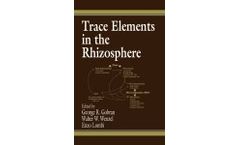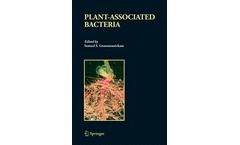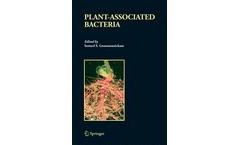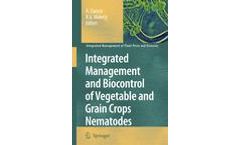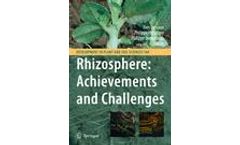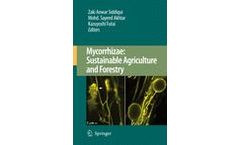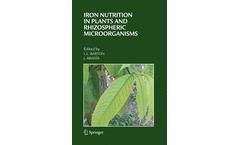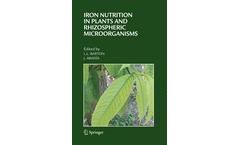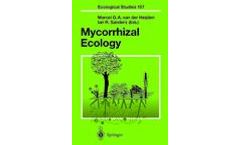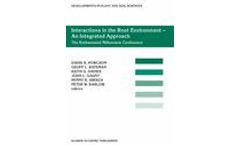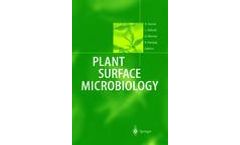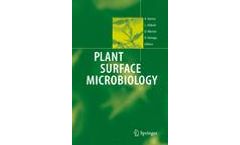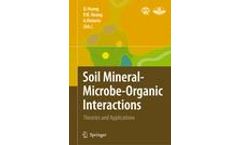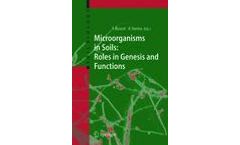Refine by
rhizosphere books
18 books found
The first book devoted to the complex interactions between trace elements, soils, plants, and microorganisms in the rhizosphere, Trace Elements in the Rhizosphere brings together the experimental, investigative, and modeling branches of rhizosphere research. Written by an international team of authors, it provides a comprehensive overview of the ...
Ranging from those identifiable from a moving vehicle, to those only elucidated with powerful molecular tools, the rhizosphere is examined by 28 authors in three sections: Macro-scale-- Learn the four classes of root that deal with soil spatial and temporal variability. ...
Part I (9 chapters) on beneficial bacteria includes chapters on symbiotic nitrogen fixers, diazotrophs, epiphytes, endophytes and rhizosphere bacteria and deleterious ...
Part I (9 chapters) on beneficial bacteria includes chapters on symbiotic nitrogen fixers, diazotrophs, epiphytes, endophytes and rhizosphere bacteria and deleterious ...
The second volume of the IMPD series describes aspects related to most important phytoparasitic nematodes, considering the integration of biological control methods with other management practices and technologies, including the use of predatory nematodes and microbial rhizosphere antogonists. Chapters cover topics such as the mode of action and interactions of nematophagous ...
Described by Hiltner over a century ago (1904), the rhizosphere is defined as the fraction of soil influenced by plant root activities. This dynamic, complex interface where soil, plant roots and microbes interact is a major hotspot of microbial activity, where numerous subtle molecular processes, as well as multiple feedback events take place, Rhizosphere ...
Topics include effects on mineral weathering, soil structure, and soil organic matter and nutrient dynamics, case studies of soil-plant interactions in specific biomes and of secondary chemicals influencing nutrient cycling, the rhizosphere, and potential evolutionary consequences of plant-induced soil changes. ...
Scientific research involves multidisciplinary approaches to understand the adaptation of mycorrhizae to the rhizosphere, mechanism of root colonization, effect on plant physiology and growth, ...
This book uses an interdisciplinary approach to provide a comprehensive review on the status of iron nutrition in plants. International scientists discuss research on acquisition of iron by strategy I and strategy II plants. These reviews summarize a variety of plant species and include both laboratory and field observations. Topics covered in this book include: plants as a source of iron for ...
This book uses an interdisciplinary approach to provide a comprehensive review on the status of iron nutrition in plants. International scientists discuss research on acquisition of iron by strategy I and strategy II plants. These reviews summarize a variety of plant species and include both laboratory and field observations. Topics covered in this book include: plants as a source of iron for ...
There is increasing awareness among biologists that mutualistic interactions play a key role in natural communities. One of the best-known examples of a mutualistic interaction is the mycorrhizal symbiosis formed between soil fungi and the majority of plants. These symbioses are present in almost all terrestrial ecosystems and yet, until recently, their contributions to the functioning of those ...
This volume contains a selection of papers presented at the Rothamsted Millennium Conference "Interactions in the Root Environment - an Integrated Approach". The meeting brought together scientists from a range of disciplines interested in the relationship between soil biology and plant growth, reflected by the contents of the volume. Topics range from root development and nutrient flow, ...
Most plants rely on the co-existence with microorganisms: both groups benefit from these symbioses. It has been shown that a large number of specific genes in plants and microorganisms are only activated during these interactions. Of course, various microbes also act as pathogens. Interactions between plants and microorganisms are often located on plant surfaces, such as leaf cuticles, seeds and ...
Most plants rely on the co-existence with microorganisms: both groups benefit from these symbioses. It has been shown that a large number of specific genes in plants and microorganisms are only activated during these interactions. Of course, various microbes also act as pathogens. Interactions between plants and microorganisms are often located on plant surfaces, such as leaf cuticles, seeds and ...
This book is devoted to the structural roots of woody plants, with a particular emphasis on the anchorage, form and development of tree root systems. For the first time, a large number of papers on the architecture and biomechanics of structural root systems are presented together with discussions on consequences for tree stability in both forest and urban environments. The development of ...
The book presents the latest research findings and prospects on soil mineral-organic matter-microorganism interactions. It includes topics covering mechanisms of transformations, dynamics and bioavailability of heavy metals, radionuclides, biomolecules and nutrients immobilized on soil minerals, humic substances, mineral-humic complexes and microorganisms and their impact on plant, animal and ...
Soils would not exist without the complex and heterogeneous activities of microorganisms. For the third volume of Soil Biology, an international board of renowned scientists shed light on the significant role of these organisms. The following key topics are covered: Microorganisms in bioerosion, humification, mineralization and soil aggregation; Microbial energetics and microbes in biogeochemical ...

